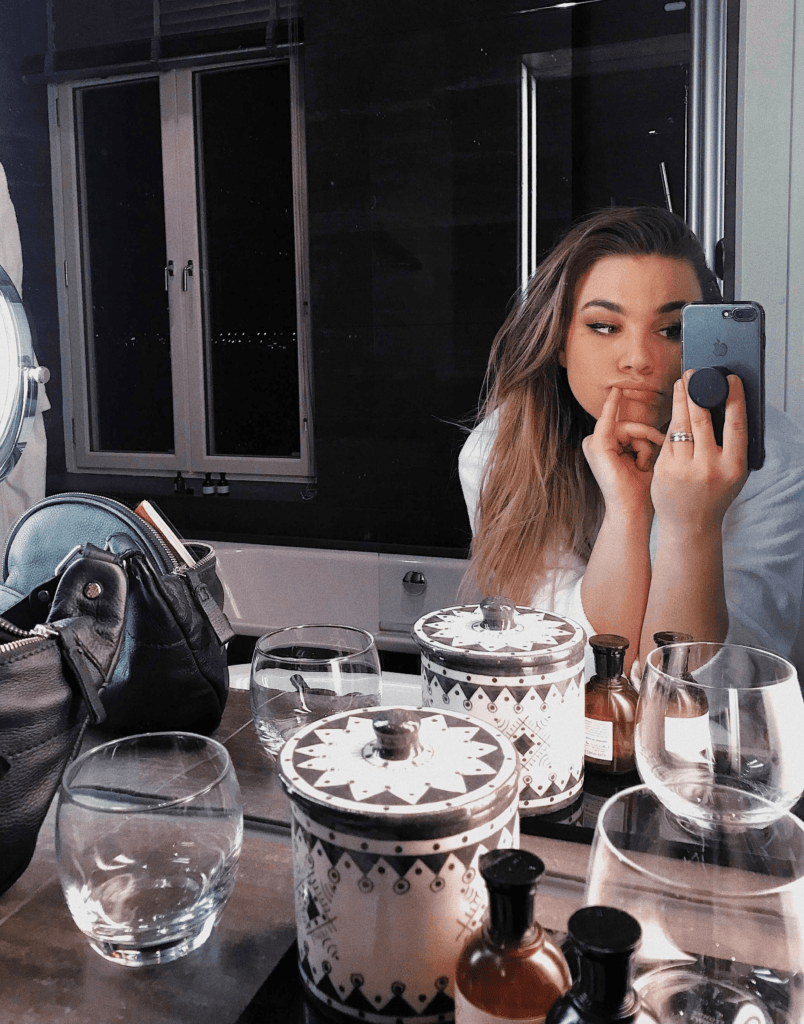Last updated on September 3rd, 2024 at 03:16 am
- The Rise of the Selfie Culture
- Psychology Behind Selfie-Taking Behavior
- 1. Self-Exploration and Identity Formation
- 2. Attention-Seeking and Validation
- 3. Social Connection and Belonging
- 4. Documentation and Memory-Making
- 5. Self-Objectification and Body Image Concerns
- Impact on Self-Image and Body Dysmorphia
- 1. Increased Self-Scrutiny
- 2. Unrealistic Beauty Standards
- 3. Filter Dependency
- 4. Comparison and Competition
- 5. The Rise of “Snapchat Dysmorphia”
- Cultural Differences in Selfie Practices
- 1. Individualism vs. Collectivism
- 2. Beauty Standards and Self-Presentation
- 3. Gender Norms and Selfie Behavior
- 4. Religious and Social Restrictions
- 5. Technological Access and Digital Literacy
- 6. Cultural Attitudes Towards Self-Promotion
- How Technology Fuels Narcissistic Tendencies
- 1. Instant Gratification and Constant Validation
- 2. Curated Self-Presentation
- 3. Expanded Audience and Influence
- 4. Comparison Culture
- 5. The Illusion of Intimacy
- 6. Algorithmic Reinforcement
- Thank You For Reading. Did this first part pique your interest? There’s so much more to explore! We’ve only scratched the surface of how narcissism is impacting our world.
- Ready For More? Click Here To Read Other Parts!
Have you ever caught yourself obsessively checking your phone for likes on that perfectly filtered selfie? Or felt a twinge of envy scrolling through your friend’s seemingly picture-perfect vacation posts? Welcome to the digital age, where your social media feed is secretly nurturing your inner narcissist.
We’re living in the midst of a narcissism epidemic, and social media is the fuel that’s sending it into overdrive. That little dopamine hit you get from each notification? It’s rewiring your brain, one like at a time. But here’s the kicker – you’re not alone in this addictive dance of self-promotion and validation-seeking.
From Instagram influencers flaunting their “flawless” lives to Twitter warriors battling for retweets, we’re all trapped in a vicious cycle of digital self-obsession. The consequences? A society increasingly focused on appearance over substance, instant gratification over genuine connection.
But before you hit that unfollow button on life, take a deep breath. There’s hope. In this post, we’ll dive deep into the psychology behind social media narcissism, explore its impact on our relationships and mental health, and uncover strategies to break free from its alluring grip.
Ready to look beyond the filters and face the unfiltered truth about your social media habits? Buckle up – this journey of self-discovery might just change how you view your digital self forever.

-By Som Dutt from https://embraceinnerchaos.com
The Rise of the Selfie Culture
One of the most visible manifestations of technology’s impact on narcissism is the rise of selfie culture. The selfie phenomenon has become so prevalent that the term was added to the Oxford English Dictionary in 2013. This trend of self-portraiture has profound implications for how individuals perceive themselves and interact with the world around them.
Psychology Behind Selfie-Taking Behavior
The psychology of selfie-taking behavior is complex and multifaceted, driven by a combination of individual personality traits, social norms, and technological affordances. Understanding the motivations behind selfie-taking can provide insights into its relationship with narcissism and broader societal trends.
1. Self-Exploration and Identity Formation
For many individuals, particularly young adults and adolescents, selfies serve as a tool for self-exploration and identity formation. By experimenting with different poses, expressions, and settings, individuals can explore various aspects of their personality and presentation.
A study published in the “International Journal of Mental Health and Addiction” found that selfie-taking was positively associated with self-esteem among young adults. The researchers suggested that selfies could serve as a means of self-affirmation and identity consolidation.
2. Attention-Seeking and Validation
For individuals with narcissistic tendencies, selfies can be a powerful tool for seeking attention and validation. The act of posting a selfie and receiving likes and comments can provide a quick boost to self-esteem and reinforce narcissistic behaviors.
Research published in the journal “Personality and Individual Differences” found that individuals who scored higher on measures of narcissism were more likely to post selfies frequently and to edit their selfies before posting. This suggests that selfie-taking and sharing may be driven by a desire for admiration and validation.
3. Social Connection and Belonging
Selfies can also serve as a means of social connection and belonging. By sharing images of themselves, individuals can feel more connected to their social networks and participate in shared cultural experiences.
A study in the “Computers in Human Behavior” journal found that individuals who posted more selfies reported feeling more connected to their friends and family. However, the same study also found that excessive selfie-posting was associated with lower levels of intimacy in close relationships, suggesting a potential trade-off between broad social connection and deep interpersonal relationships.
4. Documentation and Memory-Making
Many individuals use selfies as a form of documentation, capturing moments and experiences to preserve memories. This behavior is not inherently narcissistic but can become problematic when it interferes with lived experiences or becomes obsessive.
Research from the University of Southern California found that taking photos, including selfies, can enhance enjoyment of positive experiences by increasing engagement and immersion. However, the same study noted that excessive photo-taking could detract from the experience itself.
5. Self-Objectification and Body Image Concerns
The prevalence of selfie culture has raised concerns about its impact on body image and self-objectification. The act of repeatedly viewing and evaluating one’s own image can lead to increased self-scrutiny and dissatisfaction with one’s appearance.
A study published in the “International Journal of Eating Disorders” found that increased selfie-taking and sharing was associated with increased body dissatisfaction and disordered eating behaviors among young women. This suggests that the selfie phenomenon may contribute to the development and maintenance of negative body image and related mental health issues.
Impact on Self-Image and Body Dysmorphia
The rise of selfie culture has had significant implications for how individuals perceive and evaluate their own appearance. While selfies can be a tool for self-expression and creativity, they can also contribute to negative self-image and, in some cases, body dysmorphic disorder (BDD).
1. Increased Self-Scrutiny
The act of taking and editing selfies involves a level of self-scrutiny that was previously less common. Individuals may spend significant time examining their features, identifying perceived flaws, and attempting to present the most flattering image possible.
Research published in the “Journal of Aesthetic Nursing” found that the rise of selfie culture has led to an increase in requests for cosmetic procedures, with many patients citing their appearance in selfies as a motivating factor. This suggests that the constant self-evaluation inherent in selfie culture may be contributing to heightened appearance concerns.
2. Unrealistic Beauty Standards
Social media platforms are flooded with images of idealized beauty, often enhanced by filters, editing tools, and even cosmetic procedures. This constant exposure to unrealistic standards can lead to dissatisfaction with one’s own appearance and a distorted perception of what constitutes “normal” or “beautiful.”
A study published in the “Journal of the American Academy of Facial Plastic and Reconstructive Surgery” found that 55% of facial plastic surgeons reported seeing patients who wanted to improve their appearance in selfies, up from just 13% in 2013. This trend, dubbed “Snapchat dysmorphia,” highlights the profound impact of selfie culture on perceptions of beauty and self-image.

-By Som Dutt from https://embraceinnerchaos.com
3. Filter Dependency
Many social media platforms offer filters and editing tools that can dramatically alter one’s appearance in photos. While these tools can be fun and creative, they can also lead to a form of filter dependency, where individuals become uncomfortable with their unaltered appearance.
Research from Boston University School of Medicine’s Department of Dermatology found that the use of photo editing and filtering on social media was associated with increased acceptance of cosmetic surgery and body dysmorphic disorder symptoms. This suggests that the widespread use of filters may be contributing to distorted body image and unrealistic beauty expectations.
4. Comparison and Competition
Selfie culture often involves an element of social comparison, with individuals measuring their appearance against that of their peers and celebrities. This constant comparison can fuel feelings of inadequacy and drive individuals to engage in increasingly extreme measures to improve their appearance.
A study published in the “Journal of Adolescent Health” found that frequent social media use was associated with increased body image concerns among adolescents, with selfie-posting and photo investment (time spent selecting and editing photos) being particularly strong predictors of body dissatisfaction.
5. The Rise of “Snapchat Dysmorphia”
The term “Snapchat dysmorphia” was coined to describe the phenomenon of individuals seeking cosmetic procedures to look more like their filtered selfies. This trend represents a concerning blurring of the lines between digital self-presentation and physical reality.
A 2018 article in the journal “JAMA Facial Plastic Surgery” highlighted the rise of this phenomenon, noting that patients were increasingly bringing filtered selfies to plastic surgeons as examples of their desired appearance. This trend raises ethical concerns about the role of technology in shaping beauty standards and the potential for exacerbating body dysmorphic tendencies.
Cultural Differences in Selfie Practices
While selfie culture is a global phenomenon, its manifestations and implications can vary significantly across different cultural contexts. Understanding these cultural differences is crucial for developing a nuanced perspective on the relationship between selfies, narcissism, and broader societal trends.
1. Individualism vs. Collectivism
Cultural variations in individualism and collectivism can significantly influence selfie practices. In more individualistic cultures, such as those found in many Western countries, selfies may be more focused on personal expression and self-promotion. In contrast, collectivist cultures may use selfies more as a means of group bonding and shared experiences.
A study published in the “International Journal of Communication” compared selfie practices in the United States and China. The researchers found that American participants were more likely to post solo selfies and use them for self-promotion, while Chinese participants were more likely to post group selfies and use them to maintain social relationships.
2. Beauty Standards and Self-Presentation
Different cultures have varying beauty standards and norms for self-presentation, which can significantly impact selfie practices. For example, the popularity of beauty filters and editing apps varies across cultures, reflecting different attitudes towards natural appearance and digital enhancement.
Research published in the “Journal of Cross-Cultural Psychology” found that East Asian participants were more likely to use beauty-enhancing filters on their selfies compared to Western participants. The researchers suggested that this difference may be related to cultural variations in beauty standards and the importance placed on physical appearance.

-By Som Dutt from https://embraceinnerchaos.com
3. Gender Norms and Selfie Behavior
Gender norms and expectations can also influence selfie practices across different cultures. In some societies, selfie-taking may be seen as a predominantly feminine activity, while in others, it may be more gender-neutral.
A study published in the “International Journal of Mental Health and Addiction” found that the relationship between selfie-taking and narcissism varied by gender and culture. The researchers found that narcissism was more strongly associated with selfie-taking among men in individualistic cultures, while the relationship was stronger for women in collectivist cultures.
4. Religious and Social Restrictions
In some cultures, religious or social restrictions may impact selfie practices. For example, in some conservative societies, women may be discouraged from sharing photos of themselves publicly, leading to different patterns of selfie-taking and sharing.
Research published in the “Journal of International and Intercultural Communication” examined selfie practices among young Muslim women in Indonesia. The study found that these women negotiated complex cultural and religious expectations in their selfie practices, often using creative strategies to express themselves while adhering to cultural norms.
5. Technological Access and Digital Literacy
Differences in technological access and digital literacy across cultures can also impact selfie practices. In some regions, limited access to smartphones or social media platforms may result in different patterns of selfie-taking and sharing.
A study published in the “Information, Communication & Society” journal examined selfie practices in rural and urban areas of India. The researchers found significant differences in selfie behaviors based on technological access and digital literacy, with urban participants engaging in more frequent and diverse selfie practices.
6. Cultural Attitudes Towards Self-Promotion
Cultural attitudes towards self-promotion and public self-expression can significantly influence selfie practices. In some cultures, overt self-promotion may be seen as distasteful or inappropriate, leading to more subtle or group-oriented selfie practices.
Research published in the “Frontiers in Psychology” journal compared selfie behaviors among college students in the United States and Japan. The study found that American participants were more likely to engage in self-promoting behaviors through selfies, while Japanese participants were more likely to use selfies as a means of documenting experiences and connecting with others.

-By Som Dutt from https://embraceinnerchaos.com
How Technology Fuels Narcissistic Tendencies
1. Instant Gratification and Constant Validation
Social media platforms are designed to provide immediate feedback in the form of likes, comments, and shares. This instant gratification can be highly appealing to individuals with narcissistic tendencies, as it feeds their need for constant admiration and attention. A study published in the journal “Cyberpsychology, Behavior, and Social Networking” found that individuals who scored higher on narcissism measures were more likely to post selfies and update their status more frequently on social media platforms.
The constant stream of validation can create a feedback loop, where users become increasingly reliant on external validation for their self-worth. This dependency can exacerbate narcissistic traits and behaviors over time.
2. Curated Self-Presentation
Social media allows users to present a highly curated version of themselves to the world. Individuals can carefully select which aspects of their lives to share, often showcasing only the most flattering and impressive moments. This selective self-presentation can lead to an inflated sense of self-importance and unrealistic expectations of perfection.
Research conducted by the University of Pennsylvania found that heavy social media users tend to believe that others lead happier and more successful lives than they do, based on the curated content they see online. This perception can fuel feelings of inadequacy and drive narcissistic behaviors as individuals strive to present an equally impressive online persona.
3. Expanded Audience and Influence
The digital age has dramatically expanded the potential audience for individual self-expression. Where once a person’s sphere of influence might have been limited to their immediate social circle, social media now allows individuals to reach thousands or even millions of followers. This expanded reach can inflate one’s sense of importance and power, potentially fueling narcissistic tendencies.
A study published in the “Journal of Personality” found that individuals with higher levels of narcissism were more likely to have larger networks on social media platforms and to use these platforms more frequently for self-promotion.
4. Comparison Culture
Social media platforms facilitate constant social comparison, allowing users to measure their lives, achievements, and appearances against those of their peers and even celebrities. This ongoing comparison can fuel feelings of envy and inadequacy, driving individuals to engage in more narcissistic behaviors as they attempt to prove their worth and superiority.
Research from the University of Houston found that Facebook use was linked to depressive symptoms, with social comparison serving as a mediating factor. The study suggested that individuals who engaged in more frequent social comparison on Facebook were more likely to experience negative emotional outcomes.
5. The Illusion of Intimacy
Social media creates an illusion of intimacy, allowing users to feel connected to a large number of people without the depth of real-world relationships. This can lead to a false sense of social support and validation, potentially reinforcing narcissistic tendencies.
A study published in the “Journal of Social and Personal Relationships” found that individuals with higher levels of narcissism tended to have larger numbers of “friends” on social media but lower quality relationships in real life. This suggests that narcissistic individuals may use social media as a substitute for genuine intimacy, further reinforcing their self-centered tendencies.
6. Algorithmic Reinforcement
Social media algorithms are designed to show users content that they are likely to engage with, creating echo chambers that reinforce existing beliefs and behaviors. For individuals with narcissistic tendencies, this can mean being presented with content that validates their inflated sense of self-importance and entitlement.
Research from Stanford University has shown that these algorithmic echo chambers can lead to increased polarization and reinforcement of existing biases, potentially exacerbating narcissistic traits in susceptible individuals.
Thank You For Reading. Did this first part pique your interest? There’s so much more to explore! We’ve only scratched the surface of how narcissism is impacting our world.
Continue your journey through all 26 parts of this series to gain a comprehensive understanding on the bigger picture.
Each part builds on the last, providing you with a nuanced and thorough exploration of this complex issue. Don’t miss out on the full picture.
Ready For More? Click Here To Read Other Parts!
The Narcissism Epidemic: How Self-Obsession Is Reshaping Society Part 1
The Narcissism Epidemic: Why Younger Generations More Narcissistic? Part 2
The Narcissism Epidemic: How Technology Is Fueling the Flames of Narcissism Part 3
The Narcissism Epidemic: Navigating Narcissism at Workplace Part 4
The Narcissism Epidemic: The Impact of Narcissistic Leadership on Company Culture Part 5
The Narcissism Epidemic: Fame, Fandom, and Celebrity Culture Part 6
The Narcissism Epidemic: How Media Cultivates Celebrity Worship Part 7
The Narcissism Epidemic: The Impact of Celebrity Narcissism on Society Part 8
The Narcissism Epidemic: How Social Media Feeds Your Inner Narcissist Part 9
The Narcissism Epidemic: Social Media and Self-Obsession Part 10
The Narcissism Epidemic: The Dark Side of Social Media Validation Part 11
The Narcissism Epidemic: When Parents’ Self-Absorption Affects Their Children Part 12
The Narcissism Epidemic: The Effects of Narcissistic Parenting on Children Part 13
The Narcissism Epidemic in Leadership: Brilliance or Tyranny? Uncover the Paradox Part 14
The Narcissism Epidemic: The Dark Side of Narcissistic Leadership Part 15
The Narcissism Epidemic: The Dark Side of Internet Fame: From Influence to Ego Part 16
The Narcissism Epidemic: The Role of Social Media Influencers in Promoting Narcissism Part 17
The Narcissism Epidemic: The Influencer-Narcissism Connection Exposed Part 18
The Narcissism Epidemic: How Does Narcissism Fuel (or Hinder) Artistic Genius? Part 19
The Narcissism Epidemic: The Impact of Narcissism on Artistic Process Part 20
The Narcissism Epidemic: When Artist Egos Overshadow Their Work Part 21
The Narcissism Epidemic: The Dark Side of Charismatic Politicians Part 22
The Narcissism Epidemic in Politics: When Ego Drives Policy Part 23
The Narcissism Epidemic: The Impact of Narcissistic Leadership on Governance Part 24
The Narcissism Epidemic of Economics: Consumerism and Self-Image Part 25
The Narcissism Epidemic: The Impact of Narcissism on Individuals and Society Part 26



